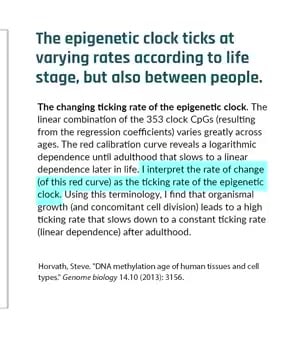DNA methylation
Sources:
DNA methylation is a significant focus in the study of biological aging and epigenetics. Methylation is a chemical modification of the DNA molecule, specifically occurring at what are known as CPG sites—locations in the genome where a cytosine nucleotide occurs next to a guanine nucleotide in the DNA sequence. This modification can significantly impact the function of the genes, typically affecting the expression levels by turning genes on or off.
DNA methylation patterns change as individuals age, with certain CPG sites gaining methylation and others losing it. This change influences gene expression and, by extension, multiple biological processes including aging. Methylation patterns are used to estimate biological age through various epigenetic clocks, which predict an individual's biological age based on their methylation status. These clocks can provide insights that are more aligned with biological reality rather than chronological age, helping in assessing overall health and potential risks for age-related diseases.
Moreover, the stability of DNA methylation compared to other biological markers makes it a powerful tool for assessing age-related changes across different tissue types, offering a consistent measure whether in skin, brain, or other tissues. This stability also renders DNA methylation data reliable even under non-ideal storage conditions 1 2.
RELATED QUESTIONS

